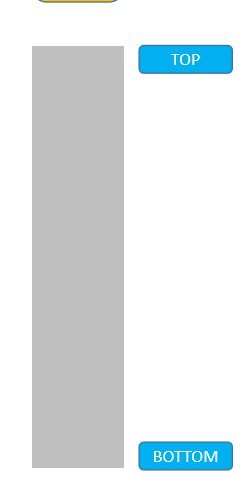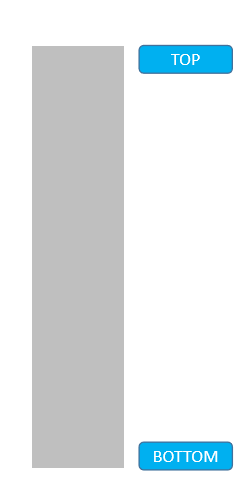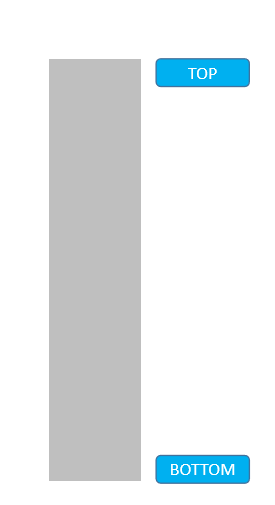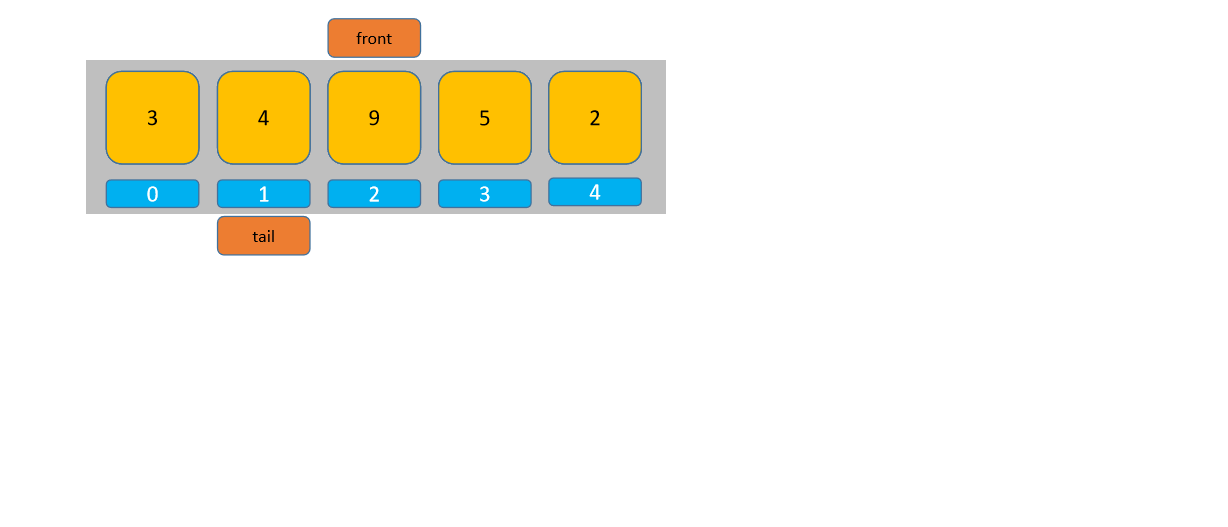算法入门 - 基于动态数组的栈和队列(Java版本)
之前我们学习了动态数组的实现,接下来我们用它来实现两种数据结构——栈和队列。首先,我们先来看一下栈。
一、什么是栈?
栈是计算机的一种数据结构,它可以临时存储数据。那么它跟数组有何区别呢?
我们知道,在数组中无论添加元素还是删除元素,都可以根据索引位置或值进行操作,栈是否也支持这样的操作呢?答案是不行,栈最大的特点就是后进先出(Last In First Out, LIFO):

栈虽然看似简单,但是在计算机世界中有着非常重要的作用。比如在连续调用时,就利用了栈的特性:
public static void addNum(){
System.out.println("加法运算");
Scanner scanner = new Scanner(System.in);
System.out.print("请输入整数a:");
int a = scanner.nextInt();
System.out.print("请输入整数b:");
int b = scanner.nextInt();
System.out.println("a + b = " + (a + b));
}
public static void main(String[] args) {
addNum();
}
这里,在调用 addNum 方法时,内部又依次调用了两次 Scanner 实现输入。所以可以这么看,先调用了 addNum 方法,但是必须等待两次 Scanner 调用完成后,addNum 方法才能结束:

了解了栈后进先出的特点,我们就可以使用动态数组进行模拟了。
1.使用动态数组模拟栈
模拟的关键点在于“后进”和“先出”,也就是说,如果使用数组模拟的话,入栈时需要从数组尾部添加元素(addLast),出栈时也从尾部出栈(removeLast):

所以这样一来,数组头部实际上是栈底,数组尾部是栈顶。
接下来我们就用代码实现。
2.代码实现
首先定义栈的接口,规范栈的操作:
package com.algorithm.stack;
public interface Stack <E> {
void push(E element); // 入栈
E pop(); // 出栈
E peek(); // 查看栈顶元素
int getSize(); // 获取栈长度
boolean isEmpty(); // 判断栈是否为空
}
按照刚才说的,只要分别使用动态数组的 addLast() 和 removeLast() 方法替代栈的 push() 和 pop() 方法即可:
package com.algorithm.stack;
import com.algorithm.dynamicarrays.Array;
// 使用动态数组实现栈结构
// 栈底: index = 0; 栈顶: index = size - 1 (push: O(1), pop: O(1))
// 如果栈顶设在index=0的位置,push和pop都将面临较大开销(O(n))
public class ArrayStack<E> implements Stack<E>{
private Array<E> arr; // 使用之前实现的Array动态数组模拟栈
public ArrayStack(int capacity){
arr = new Array<>(capacity);
}
public ArrayStack(){
arr = new Array<>();
}
// 从栈顶压入
@Override
public void push(E element){
arr.addLast(element);
}
// 从栈顶弹出
@Override
public E pop(){
return arr.removeLast();
}
// 从栈顶返回
@Override
public E peek(){
return arr.getLast();
}
// 栈长度
@Override
public int getSize(){
return arr.getSize();
}
// 栈容量
public int getCapacity(){
return arr.getCapacity();
}
// 判断栈是否为空
@Override
public boolean isEmpty(){
return arr.isEmpty();
}
@Override
public String toString(){
StringBuilder str = new StringBuilder();
str.append(String.format("Stack: size = %d, capacity = %d\n[", getSize(), getCapacity()));
for (int i=0; i<getSize(); i++) {
str.append(arr.get(i));
if (i < getSize() - 1) {
str.append(", ");
}
}
str.append("] top"); // 标识出栈顶位置
return str.toString();
}
// main函数测试
public static void main(String[] args) {
ArrayStack<Integer> arrayStack = new ArrayStack<>();
for (int i =0; i<5; i++){
arrayStack.push(i);
System.out.println(arrayStack);
}
// pop
arrayStack.pop();
System.out.println(arrayStack);
}
}
/*
输出结果:
Stack: size = 1, capacity = 10
[0] top
Stack: size = 2, capacity = 10
[0, 1] top
Stack: size = 3, capacity = 10
[0, 1, 2] top
Stack: size = 4, capacity = 10
[0, 1, 2, 3] top
Stack: size = 5, capacity = 10
[0, 1, 2, 3, 4] top
Stack: size = 4, capacity = 10
[0, 1, 2, 3] top
*/
结果符合预期。
3.时间复杂度分析
入栈对应的数组操作是 addLast(),我们可以通过查看该方法的具体实现进行分析:
/**
* 在指定位置添加元素
* 指定位置处的元素需要向右侧移动一个单位
* @param index 索引
* @param element 要添加的元素
*/
public void add(int index, E element) {
if (index < 0 || index > size) throw new IllegalArgumentException("Illegal index, index must > 0 and <= size!");
// 数组满员触发扩容
if (getSize() == getCapacity()) {
resize(2 * getCapacity()); // 扩容为原数组的2倍
}
// 从尾部开始,向右移动元素,直到index
for (int i = getSize() - 1; i >= index; i--) {
data[i + 1] = data[i];
}
// 添加元素
data[index] = element;
size++;
}
// 数组尾部添加元素
public void addLast(E element) {
add(getSize(), element);
}
/**
* 删除指定位置元素
* 通过向左移动一位,覆盖指定位置处的元素,实现删除元素(data[size - 1] = null)
* @param index 索引
*/
public E remove(int index) {
if (index < 0 || index > size) throw new IllegalArgumentException("Illegal index, index must > 0 and < size!");
// 数组长度为0时抛出异常
if (getSize() == 0) throw new IllegalArgumentException("Empty array!");
E removedElement = data[index];
// 向左移动元素
for (int i = index; i < getSize() - 1; i++) {
data[i] = data[i + 1];
}
// 将尾部空闲出的位置置为空,释放资源
data[getSize() - 1] = null;
size--;
// size过小触发数组缩减
if (size == getCapacity() / 4 && getCapacity() / 2 != 0) resize(getCapacity() / 2);
return removedElement;
}
// 删除尾部元素
public E removeLast() {
return remove(getSize() - 1);
}
可以看出,每次从数组尾部添加元素时,add() 方法的 for 循环都无法满足条件,等同于直接在 size 处添加元素,所以时间复杂度为 O(1)。如果再考虑数组满员后触发的 resize 操作,相当于是进行了 n+1 次 add() 操作后才会触发 n次操作的 resize(移动n个元素至新数组),所以每次 add() 操作平均耗时为 \(\frac{2n+1}{n+1} \approx 2\),是一个与数组长度 n 无关的数,所以也可以看做是 O(1) 复杂度的。
同理,出栈对应的 removeLast() 的时间复杂度也是 O(1)。
二、什么是队列?
理解了栈后,队列就更简单了。实际上,队列是我们日常生活中几乎每天都会碰到的。我们去超市买东西结账时需要排队,去银行办理业务时需要排队,做核酸、打疫苗就更需要排队了😂:

所以队列是一种先进先出的数据结构。
1.使用动态数组模拟队列
如果将队列也转换成数组,会是这样:

可以看出,入队的操作与入栈的实现方式相同,而出队则是从数组头部(removeFirst)。
2.代码实现
同样,我们先定义队列接口:
package com.algorithm.queue;
public interface Queue<E> {
void enqueue(E element); // 入队
E dequeue(); // 出队
E getFront(); // 获取队首元素
int getSize(); // 获取队列长度
boolean isEmpty(); // 判断队列是否为空
}
package com.algorithm.queue;
import com.algorithm.dynamicarrays.Array;
// 使用动态数组实现队列
public class ArrayQueue<E> implements Queue<E>{
private Array<E> arr; // 使用之前实现的Array动态数组模拟队列
public ArrayQueue(int capacity){
arr = new Array<>(capacity);
}
public ArrayQueue(){
arr = new Array<>();
}
// 队首: index = 0; 队尾: index = size - 1
// 队尾入队
@Override
public void enqueue(E element){
arr.addLast(element);
}
//队首出队
@Override
public E dequeue(){
return arr.removeFirst();
}
// 队首返回
@Override
public E getFront(){
return arr.getFirst();
}
// 队列长度
@Override
public int getSize(){
return arr.getSize();
}
// 判断队列是否为空
@Override
public boolean isEmpty(){
return arr.isEmpty();
}
// 队列容量
public int getCapacity(){
return arr.getCapacity();
}
@Override
public String toString(){
StringBuilder str = new StringBuilder();
str.append(String.format("Queue: size = %d, capacity: %d\ntop [", getSize(), getCapacity()));
for (int i=0; i< getSize(); i++) {
str.append(arr.get(i));
if (i< getSize() - 1) {
str.append(", ");
}
}
str.append("] tail"); // 标识队尾
return str.toString();
}
// main函数测试
public static void main(String[] args) {
ArrayQueue<Integer> arrayQueue = new ArrayQueue<>();
for (int i=0;i<5;i++){
arrayQueue.enqueue(i);
System.out.println(arrayQueue);
if (i % 3 == 2){ // 每隔3个元素进行出队操作
arrayQueue.dequeue();
System.out.println(arrayQueue);
}
}
}
}
/*
输出结果:
Queue: size = 1, capacity: 10
top [0] tail
Queue: size = 2, capacity: 10
top [0, 1] tail
Queue: size = 3, capacity: 10
top [0, 1, 2] tail
Queue: size = 2, capacity: 5
top [1, 2] tail
Queue: size = 3, capacity: 5
top [1, 2, 3] tail
Queue: size = 4, capacity: 5
top [1, 2, 3, 4] tail
*/
3.时间复杂度分析
入队的时间复杂度与之前入栈相同,都是 O(1);而出队由于是从数组头部出,所以会触发剩余元素向左移动,所以时间复杂度为 O(n)。
三、循环队列
1.原理分析
这么一看,好像队列的性能不如栈啊。如果能在出队时不移动元素,那么出队的时间复杂度也是O(1)了。我们先来看看不移动元素的话,会是什么情况:

看着有点晕,整个过程实际上是先入队3、9、5,然后3出队,4、2入队,9出队,最后1、7入队。可以注意到,1入队后,后面再无位置,但是可以往之前出队过的位置继续入队。所以我们需要两个参数,分别记录队列的首尾位置:

这下就清楚多了,所以要实现一个这样首尾循环的队列,主要有以下几个要点:
(1)当队列为空时,front 和 tail 都为-1;
(2)第一个元素入队时,front 和 tail 同时置为0;
(3)后续元素入队时,只移动tail,但要注意tail从队尾移到队首的情形,所以下一个位置的索引为(tail + 1) % array.length;
(4)有元素出队时,移动front,同时也要注意索引循环的问题;
(5)如果(tail + 1) % array.length == front,说明队列已满,则触发扩容;
(6)如果 size 过小,则触发队列缩减。
这里需要注意的是,数组扩容和缩减后,需要将元素按照初始位置排列好:

由此,我们就可以将初始的队列升级为循环队列了。
2.代码实现
package com.algorithm.queue;
public class LoopQueue<E> implements Queue<E>{
private E[] data; // 存放数组元素
private int front, tail, size; // 分别记录队首、队尾索引和数组长度
public LoopQueue(int capacity){
data = (E[])new Object[capacity];
front = tail = -1;
size = 0;
}
public LoopQueue(){
this(10);
}
@Override
public int getSize(){
return size;
}
public int getCapacity(){
return data.length;
}
// 判断是否为空
public boolean isEmpty(){
return getSize() == 0;
}
// 获取队首元素
@Override
public E getFront(){
if (isEmpty()) throw new IllegalArgumentException("Empty queue, enqueue first!");
return data[front];
}
// 入队
@Override
public void enqueue(E element){
// 如果当前数组为空,则将队首元素置为0(首次入队)
if (isEmpty()) front = 0;
// 如果tail移动一位后等于front, 说明数组已满员,则触发扩容
if ( (tail + 1) % getCapacity() == front && tail != -1) resize(2 * getCapacity());
// 先移动tail
tail = (tail + 1) % getCapacity();
// 添加元素
data[tail] = element;
size++;
}
// 出队
public E dequeue(){
if (isEmpty()) throw new IllegalArgumentException("Empty queue, enqueue first!");
// 记录待出队元素
E deElement = data[front];
// 将front处的元素置为null
data[front] = null;
// 移动front
front = (front + 1) % getCapacity();
size--;
// 如果size过小,则触发缩减
if (getSize() == getCapacity() / 4 && getCapacity() / 2 != 0) {
resize(getCapacity() / 2);
}
// 如果出队后队列为空,则将front和tail同时置为-1
if (isEmpty()) front = tail = -1;
return deElement;
}
// 数组扩容/缩减
public void resize(int newCapacity){
// 创建新数组
E[] newData = (E[])new Object[newCapacity];
// 将原数组中的元素按顺序放入新数组中
for (int i=0; i<getSize(); i++) {
newData[i] = data[(i +front) % getCapacity()];
}
// 重置front和tail
front = 0;
tail = getSize() - 1;
// 将引用指向新数组
data = newData;
}
@Override
public String toString(){
if (getSize() == 0) return "[]";
StringBuilder str = new StringBuilder();
str.append(String.format("Loop Queue: size = %d, capacity = %d\n[", getSize(), getCapacity()));
// 从front开始遍历元素
for (int i=front; i!=tail; i=(i+1)%getCapacity()) {
str.append(data[i]).append(", ");
}
str.append(data[tail]).append("]");
return str.toString();
}
// main函数测试
public static void main(String[] args) {
LoopQueue<Integer> queue = new LoopQueue<>();
for (int i = 0; i < 10; i++) {
queue.enqueue(i);
// 每次入队后打印当前队列
System.out.println(queue);
// 同时打印front和tail的索引位置
System.out.printf("enqueue: front:%d, tail:%d%n", queue.front, queue.tail);
// 满足条件则进行出队操作
if (i % 2 == 0 && i != 0) {
queue.dequeue();
System.out.println(queue);
System.out.printf("dequeue: front:%d, tail:%d%n", queue.front, queue.tail);
}
}
}
}
/*
输出结果:
Loop Queue: size = 1, capacity = 10
[0]
enqueue: front:0, tail:0
Loop Queue: size = 2, capacity = 10
[0, 1]
enqueue: front:0, tail:1
Loop Queue: size = 3, capacity = 10
[0, 1, 2]
enqueue: front:0, tail:2
Loop Queue: size = 2, capacity = 5
[1, 2]
dequeue: front:0, tail:1
Loop Queue: size = 3, capacity = 5
[1, 2, 3]
enqueue: front:0, tail:2
Loop Queue: size = 4, capacity = 5
[1, 2, 3, 4]
enqueue: front:0, tail:3
Loop Queue: size = 3, capacity = 5
[2, 3, 4]
dequeue: front:1, tail:3
Loop Queue: size = 4, capacity = 5
[2, 3, 4, 5]
enqueue: front:1, tail:4
Loop Queue: size = 5, capacity = 5
[2, 3, 4, 5, 6]
enqueue: front:1, tail:0
Loop Queue: size = 4, capacity = 5
[3, 4, 5, 6]
dequeue: front:2, tail:0
Loop Queue: size = 5, capacity = 5
[3, 4, 5, 6, 7]
enqueue: front:2, tail:1
Loop Queue: size = 6, capacity = 10
[3, 4, 5, 6, 7, 8]
enqueue: front:0, tail:5
Loop Queue: size = 5, capacity = 10
[4, 5, 6, 7, 8]
dequeue: front:1, tail:5
Loop Queue: size = 6, capacity = 10
[4, 5, 6, 7, 8, 9]
enqueue: front:1, tail:6
*/
最后的输出有点长,不过通过这样的测试,可以观察随着元素的增减,队列的扩容和缩减的情况,以及 front 和 tail 索引位置的移动情况。
3.时间复杂度分析
我们主要就是将原先时间复杂度为O(n)的出队操作升级为了O(1),入队操作仍是O(1)。
总结
通过对动态数组的学习,并实现了栈和队列两种比较基础的数据结构,让我们能够更深入的了解这些结构背后的原理,为我们今后学习更复杂的数据结构打下基础。


